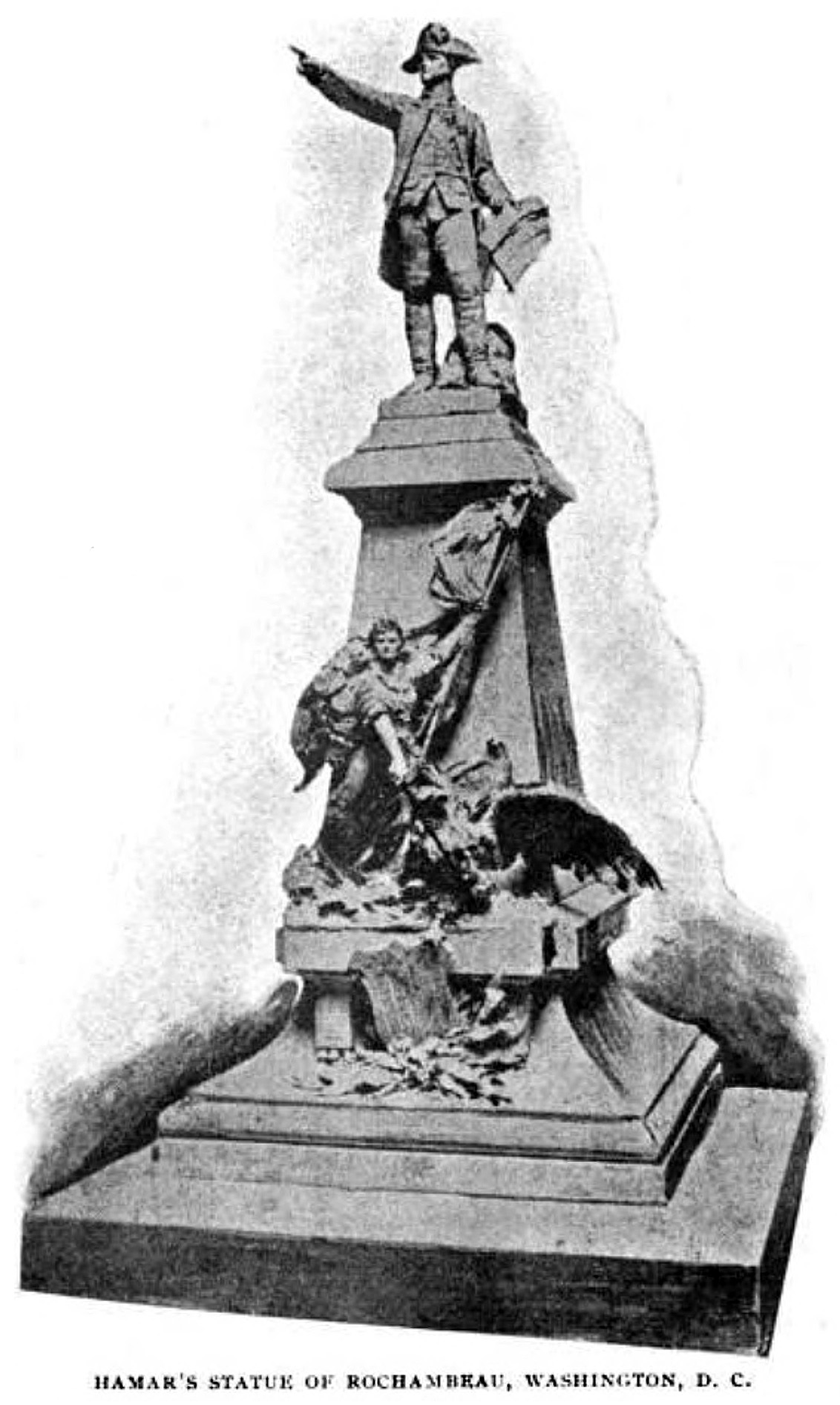
The monument illustrated on this page, erected in memory of Count Rochambeau, commander-in-chief of the French forces that assisted America during the Revolution, was unveiled on Lafayette Square, Washington, D. C., May 24, amid ceremonies of international significance. An official embassy from the French government, composed of distinguished civil and military representatives, and descendants of Count Rochambeau, was sent over on the French man-of-war Gaulois to participate in the dedication. The statue was unveiled by the Countess Rochambeau, and addresses delivered by President Roosevelt, Ambassador Cambon, Cardinal Gibbons, and General Horace Porter, United States Ambassador to France.
The statue stands at the southwest corner of Lafayette Square, and is a companion piece to the monument to Lafayette, at the southeast corner. It is a replica in bronze of the one modeled by Sculptor Ferdinand Hamar, now standing at Vendome, France, and was purchased by an appropriation of Congress. The pedestal, which is made of Poitou French Granite, was also designed by Hamar, and made by F. Gaussen.
The monument consists of a finely proportioned pedestal, in the general form of a truncated pyramid, fronted by a symbolic group, and surmounted by the heroic-sized figure of Rochambeau. The great Field Marshal is shown in the full uniform of his rank, standing in a commanding position, directing the attack on the British lines. His right hand is outstretched, and in his left he holds a map.
The symbolic figure in front of the pedestal represents France and the Spirit of Liberty, holding aloft the crossed flags of France and America. Beneath her feet is the prow of a ship, suggestive of the force which France sent to the aid of this country. Below are linked together the arms of France and of the United States, including the eagle, and on the sides of the base are the coats of arms of the French nation and the Rochambeau family. The design throughout is admirably conceived and executed, and is everywhere suggestive of the ties of friendship between the two republics.
The cost of the statue was $22,500, and Congress appropriated $15,000 for the preparation of the site and the erection of the pedestal, and $20,000 for the entertainment of the French visitors, who were the guests of the nation until June 1. They were given official entertainment, and visited West Point, Annapolis, New York and Boston during their stay.
The monument is 22 feet square at the base, and about 37 feet high. The material of the base and pedestal was all quarried in France, the base being of red granite, and the rest of the pedestal of Caen stone. The work of erection was done by J. F. Manning & Co., Washington, D. C.
The sculptor, Ferdinand Hamar, who was present at the unveiling, is a pupil of Barrias, and is a deaf mute. He is a native of Vendome, the birthplace of Rochambeau, and is about 30 years old. The statue of Rochambeau was first shown at the Paris Exposition of 1900, and won for the young sculptor an international reputation.
